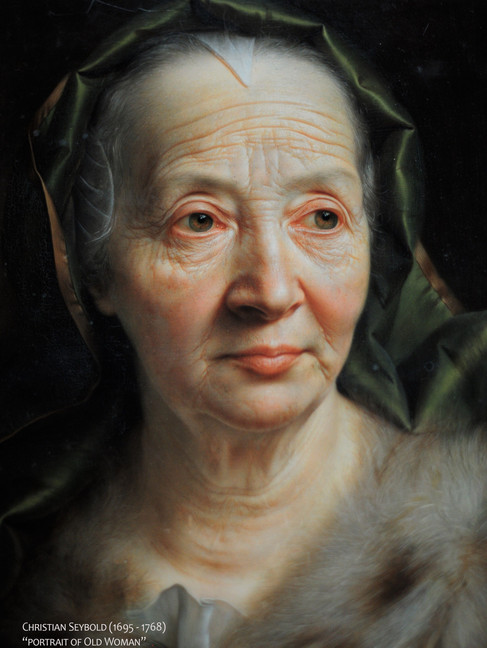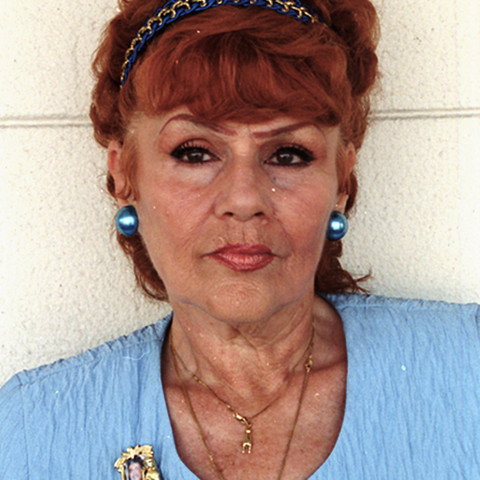Hyperrealism And Why I Don't "Just Copy Photos"
- Mark Montana

- Mar 17, 2021
- 6 min read
Updated: Jun 23
Why Hyperrealism?
The word art spans many forms—music, dance, literature, poetry, theater, film, sculpture, photography, and painting. Even when limited to figurative realism in painting, there’s still a wide range of styles—from Impressionist John Singer Sargent, to Classical Realist Bouguereau, to Hyperrealists like Chuck Close and Gottfried Helnwein.
This discussion focuses on the hyper-real end of that spectrum, which draws both admirers and detractors. Critics often assume that a photographic level of detail means the artist aimed for a photographic effect. While that’s true for some photorealists, it’s not always the case.
Pre-Photography Realism
Even before the Renaissance, artists aimed to capture the world in all its detail. Though the camera now makes that task easier, the impulse long predates photography—as seen in the work of Balthasar Denner and Christian Seybold (both pictured left), who built on the legacy of Van Eyck and Dürer.
All four achieved photographic realism without cameras. While crude optics like the camera obscura may have helped with proportion and likeness, they were useless for glazes and fine detail.
But What’s the Point (Now)?
The common argument is that realism made sense before photography, when artists documented people and events. In today’s high-tech world, there’s supposedly no need for a painter to render reality so slavishly.
My Own Experience
Paintings indistinguishable from photos tend to provoke two reactions:
From admirers, an ecstatic: "Your painting looks just like a photograph!" From skeptics, an exasperated: "Why didn’t you just take a photograph?"
As someone whose work blends Hyperrealism with Classical Realism and Romanticism, I've heard both reactions. I appreciate the praise, but I’m not unsympathetic to the criticism.
I’ve asked myself the same question when seeing artists proudly display a photo alongside a near-exact replica, daring viewers to spot a difference.
While technically impressive, such works can prompt the question: “What’s the point?” Especially when they copy photographs taken by others—outsourcing one of the artist’s most vital roles: deciding how to portray the subject.
My Early Influences
As a young artist, I often worked from photos taken by others. Even before elementary school, I was proficient at drawing portraits— and was accepting paid commissions by age eight. My “clients” were teachers and classmates, and my “fees” ranged from $50 to $250. Most of my works were graphite copies of school photos and the photo studios of Olan Mills, K-Mart and JC Penny.

When not drawing for others, I focused on celebrities of the day—John Travolta, Farrah Fawcett, Diana Ross, Nastassja Kinski and Barbra Streisand, with her cat-like eyes, high cheekbones, full lips, and long sculptural nose.
Though some might dismiss celebrity portraiture as "unserious," I learned a great deal from those early “silly” drawings. Many of the stars I drew had been photographed by masters like Leibovitz, Scavullo, and Avedon, using flawless lighting and medium-format cameras that revealed extraordinary detail.
Drawing Streisand
As a teenager, I drew Barbra Streisand at least 20 times. At 17, I began what would be both my final drawing of her—and the last time I would draw or paint anything for 13 years.
That drawing was based on a stunning photograph by the legendary Irving Penn, published in a 1964 issue of Vogue.
At the time, Streisand was just becoming nationally known. Her ‘ethnic’ features defied conventional standards of beauty, yet photographers compared her to Cleopatra and Nefertiti.
Penn’s portrait presented the 22-year-old Streisand as a glamorous ingénue—but in doing so, he seemed to conceal the very features that made her iconic. He shot from below to shorten her nose and lit her face evenly, flattening her features into something almost two-dimensional—like Matisse-style cutouts.
The Photograph vs. The Drawing
While I admired the image enough to draw it, I felt compelled to restore what Penn had concealed. Her nose needed its bump and structure. Even her lips seemed flattened—more Joan Crawford than Barbra Streisand. I vacillated between the mistaken belief that I had to faithfully reproduce the photo and a gnawing urge to feel her features in a way the image didn’t permit.
I began referencing other photos, trying to understand her face as a three-dimensional form—as if I were sculpting rather than drawing.
That process made me hyper-aware of photography’s many limitations and deceits. Until then, I’d accepted the old maxim, “The camera doesn’t lie.” But that drawing convinced me otherwise. Any ‘truth’ in a photograph is highly subjective—shaped by lens choice, lighting, proximity, aperture, and more.
The Break and the Sprain
Upon leaving high school, I wanted a break from my identity as "Mark Montana the artist." In 1991, I moved to NYC and found surprisingly rewarding work in the high-energy world of fine dining.
By late 1996, I was working as a waiter at Bobby Flay's flagship restaurant, MESA Grill. At that point, my brief hiatus from art had stretched to 13 years. A badly sprained ankle forced me into five weeks of bed confinement. To cope with the tedium, I unpacked my old drawings and rediscovered my final portrait of Streisand—based on the Penn image. Seeing it again took my breath away.
When I returned to work, I brought the drawing with me to show a few coworkers. A Streisand-obsessed bartender stunned me with an offer of $5,000. I’d never charged more than $500 for a drawing, and while that $5,000 was sorely needed after five weeks of missed income, I instinctively knew not to part with it—if only because it was the best example of my work that I owned. But I thought, if he’s willing to pay $5,000 for my drawing, I might be in the wrong profession as a waiter.
Those Who Can't Do... Discourage
Hoping to re-enter the art world the “right” way, I uncharacteristically sought guidance from experts. The first was an Irish immigrant friend, then enjoying enormous art-world success with photo collages addressing the AIDS crisis. His response: a dismissive “I LOATHE Barbra Streisand.” He also suggested I “loosen up” and stop being so detail-centric.
One afternoon, I gathered my courage and approached an instructor at the Art Students League whose work somewhat paralleled my sensibilities. I showed him my Streisand drawing, which he studied briefly before declaring me “one of the best renderers” he’d seen—but made sure to clarify that my work was “too photographic” and “not art.”
Deflated, I returned to MESA Grill—Streisand drawing in its plastic sleeve. The bartender who’d once offered to buy it asked me to show it to a couple of regulars at his bar. Their reaction was immediate: would I draw their two daughters?
Recalling the struggles I'd had as a teenager working from sub-optimal images, I insisted on taking my own photos—despite never having used anything more advanced than a disposable camera. A friend who managed a photo studio gave me a crash course in portrait photography and lent me both studio time and professional gear.
That first commission led to several more, though I insisted on keeping my job at MESA Grill—just in case it all went bust.
The Evolution of a Philosophy
The same frustration I’d experienced with the Streisand drawing resurfaced in 2001, when I tried to draw my mother for the first time. During a visit for her 70th birthday, I attempted to take reference photos—but she was extremely photo-phobic and grew visibly uncomfortable with a professional camera pointed at her. She allowed only three shots before calling it off. Only two were usable, and a third just a close-up of her eyes. In all of them, she looked stressed and irritated.
Fortunately, I had a vivid internal image of the portrait I wanted to create, and relied on that as much as the photos. With what I now understand about the limits of photography, I have no hesitation straying from reference material to capture the person, not the picture. That drawing still hangs in my studio. Now that my mother has passed, that image is my mother—and captures her more than any photograph or memory I have.
Working Method: Image, Not Imitation
I now use the highest-resolution digital cameras, lenses, and lighting available. When photographing a subject, I often take hundreds—sometimes thousands—of images, including close-up details.
I study these to understand the subject as a fully dimensional presence. Then I create a composite, selecting the best elements from multiple photos—one eye from here, another from there, the mouth from a third. The resulting collage simulates what I intend to paint.
My finished work rarely resembles any of the source images. I strip away bad lighting, harsh distortions, and unflattering angles to reconstruct the person as I see them. While those early drawings of Streisand may not qualify as "serious art," they taught me how to shape an aesthetic—and at least I was copying from masters like Penn, Scavullo, and Avedon.
Addendum: The Circle Closes
In 1998, I got a call from that same NYC Irish artist who’d once dismissed my Streisand drawing. He’d been commissioned by a Guggenheim curator to paint a three-panel screen of her family—each member engaged in favored activities like big-game hunting.
Confronted by his inability to capture a likeness, he asked if I’d render the faces for him—anonymously, of course. I took more than a little schadenfreude in declining.“I’d love to help,” I said, “but I’m buried in my own commissions. Why don’t you just trace the photographs onto the screen?”

.............................................................................................................................................................






































Comments